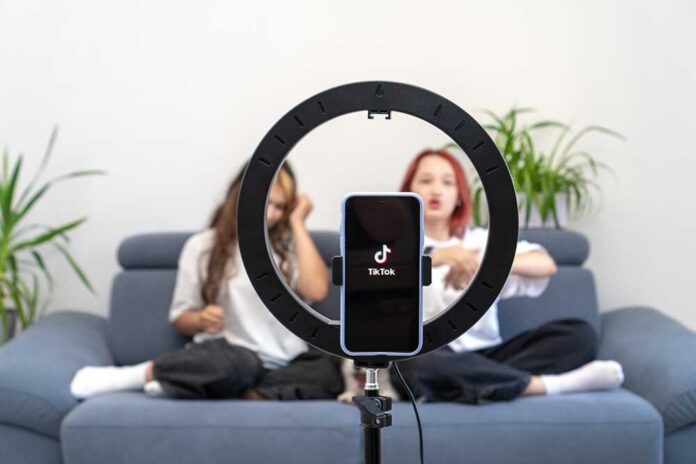
According to a recent report from the National Assessment of Educational Progress (NAEP), the reading habits of American teens are declining as TikTok has taken center stage in the digital era. The study revealed that nearly one-third of 13-year-old students admitted to either “never” or “hardly ever” reading during their leisure time. SSS
Teens Don’t Read Books Anymore Because They’re Wasting Their Lives On TikTokhttps://t.co/7It6yxRWQV
— The Federalist (@FDRLST) July 13, 2023
Shockingly, only 14 percent claimed to read “almost every day,” a decrease from 17 percent in 2020 and a significant drop from 27 percent in 2012. Sasha Quinton, the executive vice president for Scholastic School Reading Events, referred to this decline as an educational “crisis” in an interview with The Hill.
Quinton emphasized the importance of fostering a love for books and engaging teens through captivating and amusing stories. By igniting their interest, she believes we can cultivate lifelong readers. The shifting landscape of digital media has impacted reading habits, with teens devoting more of their time to social media.
Reports from Common Sense Media indicate that children and adolescents are spending more time on screens and social platforms than ever before. The average daily screen time for 13 to 18-year-olds now exceeds 8.5 hours.
In a separate study, it was discovered that teens between the ages of 11 and 18 spend over 10 hours online each day, engaging in activities such as shopping, gaming, texting, video chatting, and navigating social media. The addictive algorithms crafted by major tech companies have captivated American teens, leading them to favor their smartphones over books.
Pew Research Center’s survey found that over half of the teens aged 13 to 17 admitted it would be challenging to give up social media, despite many acknowledging its negative impact.
The surge in teen depression and attention deficit disorders coincides with the proliferation of social media.
Lockdown measures during the pandemic, which encouraged sedentary lifestyles and increased online activity, have contributed to the rise in attention-deficit/hyperactivity disorder (ADHD) diagnoses across all age groups.
Furthermore, the prolonged lockdowns have had adverse effects on academic recovery, as highlighted by the NAEP report, which found that 13-year-old students show “no signs” of progress in their studies. The Pew Research Center identified YouTube and TikTok as the most popular apps among teens aged 13 to 17.
In this digital age, where attention spans are short and distractions are plentiful, educators, parents, and society as a whole must find innovative ways to entice our youth away from the allure of TikTok and social media.












